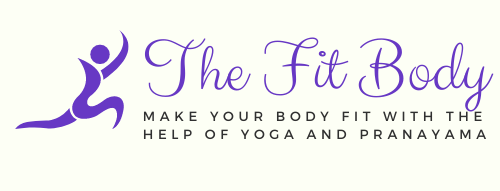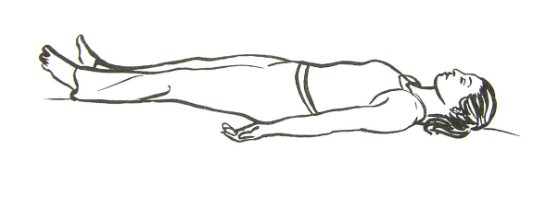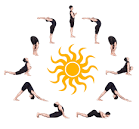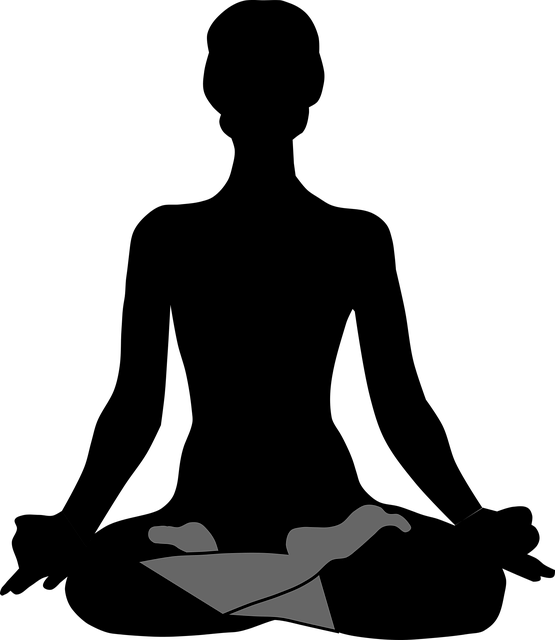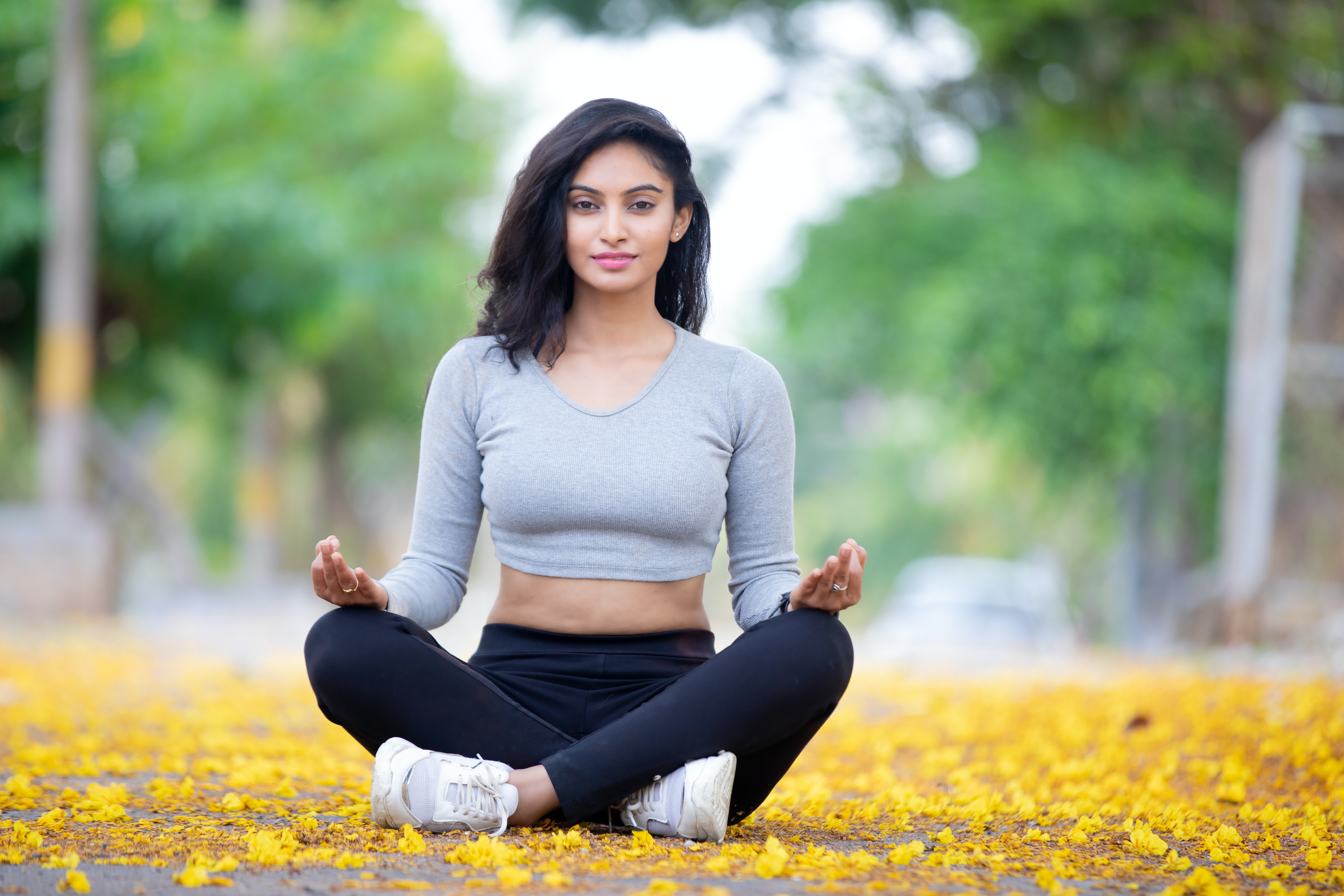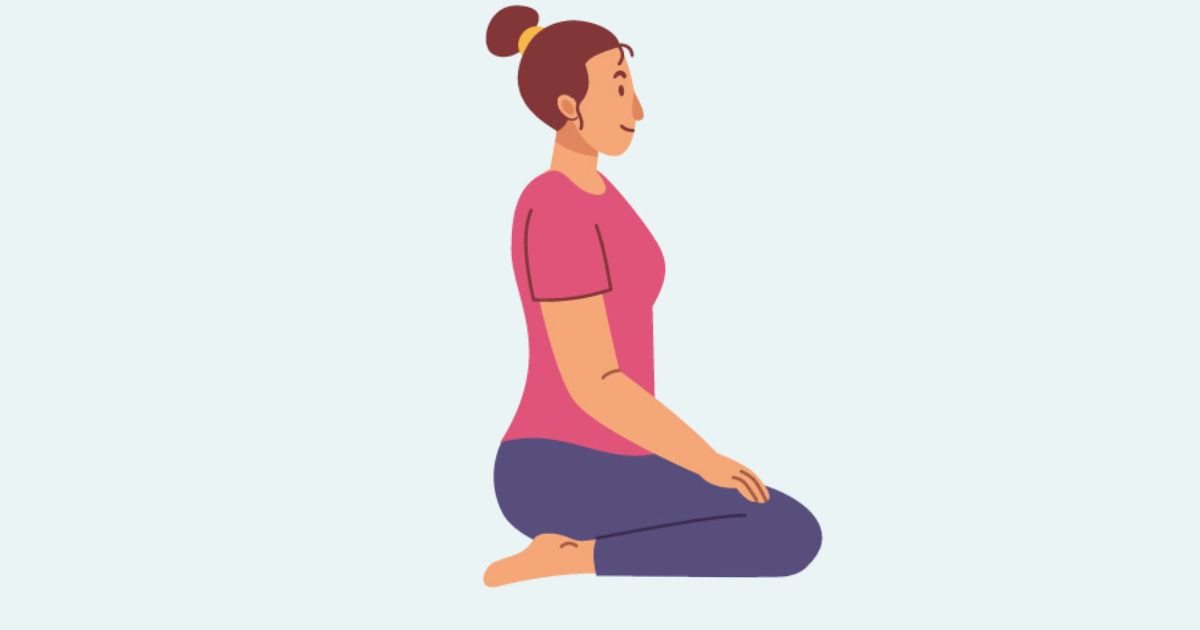Savasana, also known as the Corpse Pose, is a foundational and deeply relaxing yoga asana. It is typically practiced at the end of a yoga session to promote deep rest and integration. Here’s a description of how to practice Savasana:
- Lie down on your back on a comfortable surface, such as a yoga mat or a soft blanket. Keep your legs extended and allow your feet to fall out to the sides naturally.
- Place your arms alongside your body, a few inches away from your torso, with your palms facing up. Allow your fingers to naturally curl and relax.
- Close your eyes gently and bring your awareness to your breath. Take a few deep inhales and exhales, allowing your body and mind to begin to relax.
- Scan your body from head to toe, consciously releasing any tension or tightness you may feel. Soften your facial muscles, relax your shoulders, and let go of any gripping in your hands or feet.
- Once you feel physically settled, shift your focus to your breath. Allow your breath to flow naturally, without trying to control or manipulate it. Observe the sensation of each inhale and exhale.
- As thoughts or distractions arise, acknowledge them without judgment and gently guide your attention back to your breath or the sensation of your body resting on the mat.
- Remain in this state of relaxation for about 5 to 10 minutes, or longer if desired. Give yourself permission to fully surrender and let go during this time.
- To exit Savasana, begin to deepen your breath, gradually bring movement back to your fingers and toes, and slowly stretch your arms overhead. Roll gently onto one side and take a few breaths there before slowly pressing yourself up to a seated position.
Savasana is a wonderful practice for releasing physical and mental tension, calming the nervous system, and restoring energy. It is important to give yourself permission to fully relax and be present in this pose, allowing yourself to reap the benefits of deep rest.
Benefits of Savasana ( Corpse Pose ):
- Deep relaxation: Savasana promotes profound relaxation, allowing the body and mind to unwind and release stress.
- Stress reduction: It helps calm the nervous system, reducing anxiety and promoting a sense of tranquility.
- Mind-body integration: The pose facilitates the integration of the physical, mental, and energetic aspects of your yoga practice.
- Restores energy: Savasana replenishes and restores energy levels, leaving you feeling refreshed and rejuvenated.
- Improved focus and clarity: Regular practice of Savasana can enhance mental clarity, concentration, and overall awareness.
- Lowers blood pressure: It has been observed to have a positive impact on blood pressure, helping to reduce hypertension.
Restrictions of Savasana ( Corpse Pose ):
While Savasana is generally safe for most people, there are a few restrictions and considerations to keep in mind:
- Pregnancy: It’s best to avoid lying flat on your back during the later stages of pregnancy. You can modify Savasana by using props like bolsters or pillows to support your upper body in a reclined position.
- Injury or discomfort: If you have any specific injuries or conditions that are aggravated by lying down flat, consult with a qualified yoga instructor or healthcare professional for suitable modifications.
- Medical conditions: Individuals with certain medical conditions, such as severe low back pain, glaucoma, or vertigo, may need to modify or skip Savasana. Consult with a healthcare professional for personalized guidance.
- Difficulty relaxing: Some individuals may find it challenging to completely relax or may experience restlessness during Savasana. With regular practice, it becomes easier to cultivate a sense of relaxation.
Remember to always listen to your body, honor your limitations, and work within your comfort zone. If you have any concerns or specific health conditions, consult with a qualified yoga instructor or healthcare professional before practicing Savasana or any other yoga poses.
-
Surya Namaskar ( Sun Salutation )

Surya Namaskar, also known as Sun Salutation, is a popular sequence of yoga asanas (postures) performed in a flowing manner. It is a holistic exercise that combines physical, mental, and spiritual aspects. Surya Namaskar is traditionally practiced at sunrise to pay homage to the sun, which is considered a symbol …
-
Savasana ( Corpse Pose )

Savasana, also known as the Corpse Pose, is a foundational and deeply relaxing yoga asana. It is typically practiced at the end of a yoga session to promote deep rest and integration. Here’s a description of how to practice Savasana: Savasana is a wonderful practice for releasing physical and mental …
-
Padmasana ( Lotus pose )

Lotus pose, also known as Padmasana in Sanskrit, is a popular seated posture in yoga. It is often associated with meditation and is considered one of the more advanced asanas (postures) due to its level of flexibility and openness required in the hips and knees. Here’s a description of the …
-
Sukhasana (Easy Pose)

Shukhasana, also known as the “Easy Pose” or “Comfortable Pose,” is a basic seated yoga posture that promotes relaxation and grounding. Here’s how you can practice Shukhasana: Benefits of Shukhasana or Easy Pose: Restrictions and Considerations: Note: If you have any pre-existing knee or hip injuries, or if you experience …
-
Vajrasana (Diamond Pose)

Vajrasana is a popular yoga asana, also known as the Diamond Pose or Thunderbolt Pose. “Vajra” means diamond or thunderbolt in Sanskrit, and “asana” refers to a yoga posture or pose. Vajrasana is commonly practiced for meditation, digestion, and promoting overall well-being. To practice Vajrasana: Vajrasana is considered a sitting …
